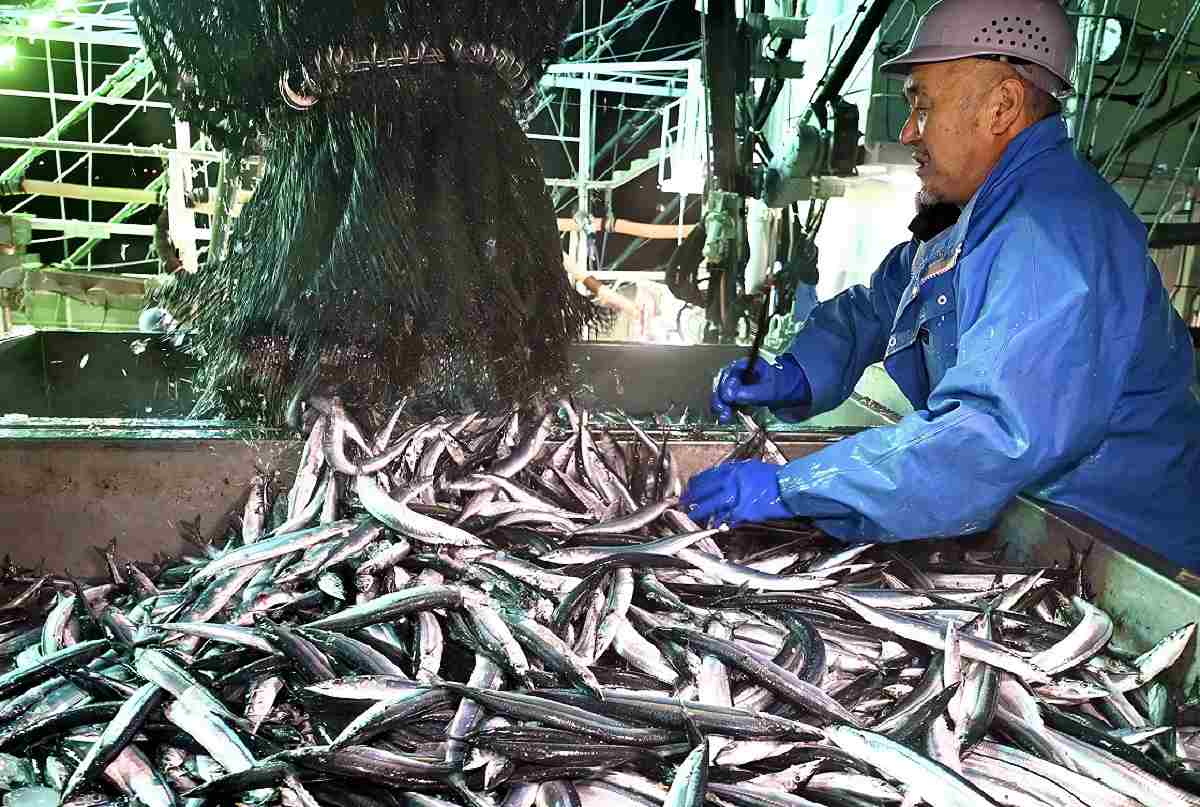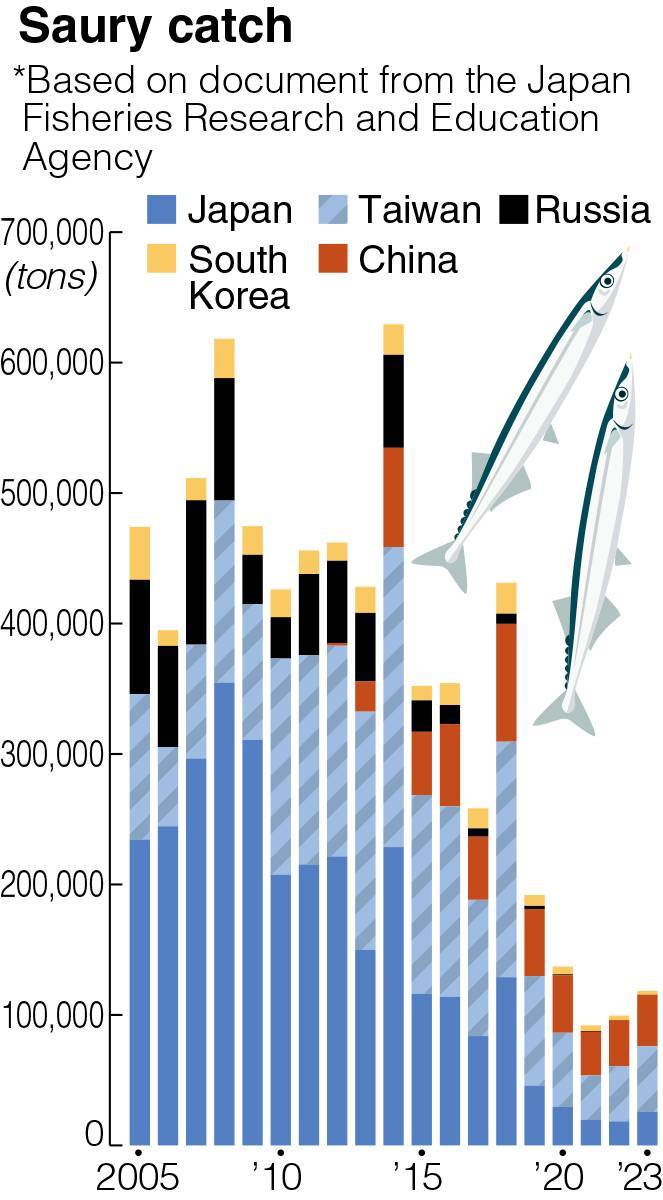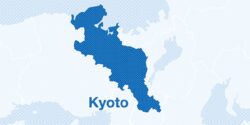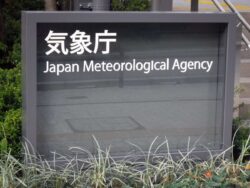Rising Sea Temperatures Diminishing Saury Catch; Sanma Season Opens With Good Numbers, But Outlook Poor

The season’s first batch of Pacific saury is landed at Hanasaki Port in Nemuro, Hokkaido, on Aug. 16.

1:00 JST, September 14, 2024
This year’s saury fishing season seemed to begin well thanks to an earlier than usual start of large-vessel fishing on the high seas. Although August landings were dramatically higher than in the same month last year, a specialized agency forecasts the overall catch this season will be as poor as last year’s. Schools of saury coming to nearby waters are expected to remain small due to rising sea temperatures.
The season for saury — called sanma in Japanese — opened on Aug. 10 this year. According to the Japan Fisheries Information Service Center, the nation’s August landings totaled 2,611 tons, mainly in Hokkaido, which was 4.5 times the volume landed in August last year at 574 tons.
Behind the high numbers was that fishing on large vessels opened about 10 days earlier than in a usual year. Until last year, the season opened first for small, and then midsize, and then large ships, as determined by navigation and fishing capacity. This year, in its first such move, the nation’s stick-held dip net saury fisheries cooperative opened the season earlier for large vessels, which go further offshore onto the high seas, and then opened it for small and mid-sized vessels together.
In August, the fishing grounds on the high seas were formed further west than usual, or around 800 kilometers to 900 kilometers off the east coast of Hokkaido. As they were thus less distant from shore, this meant that “more time could be spent fishing as traveling between the ports and the fishing grounds took less time,” the cooperative’s executive director said.
However, the outlook is not bright. According to this year’s long-term forecast by the Japan Fisheries Research and Education Agency, the volume of saury coming to waters around Japan is 920,000 tons this year, about as low as last year at 940,000 tons.
The Japan Fisheries Information Service Center’s short- and medium-term forecast released Monday states that saury will not come to the waters around east Hokkaido in mid- and late September and will be scarce even if they do so in October. The fish are expected to move southward to off Aomori, Iwate and Miyagi prefectures in late October, but their presence is expected to be intermittent and infrequent.
The rise in sea water temperature is a major factor in the poor catches in nearshore waters. According to the Fisheries Agency, global warming has weakened the Oyashio cold current, which flows southward along the Pacific coast of Hokkaido and northern Honshu, resulting in higher sea temperatures in surrounding waters. Therefore saury, which prefer cold water, have stopped coming. The domestic catch peaked at about 350,000 tons in 2008 and has since declined, reaching a record low of 18,000 tons in 2022.
"Society" POPULAR ARTICLE
-

M4.9 Earthquake Hits Tokyo, Neighboring Prefectures
-

Israeli Tourists Refused Accommodation at Hotel in Japan’s Nagano Pref., Prompting Protest by Israeli Embassy and Probe by Prefecture
-

M7.5 Earthquake Hits Northern Japan; Tsunami Waves Observed in Hokkaido, Aomori and Iwate Prefectures
-

Tsukiji Market Urges Tourists to Avoid Visiting in Year-End
-

High School in Kyoto Says Students Shoplifted during Recent School Trip to Bali, Indonesia
JN ACCESS RANKING
-

Tokyo Economic Security Forum to Hold Inaugural Meeting Amid Tense Global Environment
-

Keidanren Chairman Yoshinobu Tsutsui Visits Kashiwazaki-Kariwa Nuclear Power Plant; Inspects New Emergency Safety System
-

Imports of Rare Earths from China Facing Delays, May Be Caused by Deterioration of Japan-China Relations
-

University of Tokyo Professor Discusses Japanese Economic Security in Interview Ahead of Forum
-

Japan Pulls out of Vietnam Nuclear Project, Complicating Hanoi’s Power Plans























